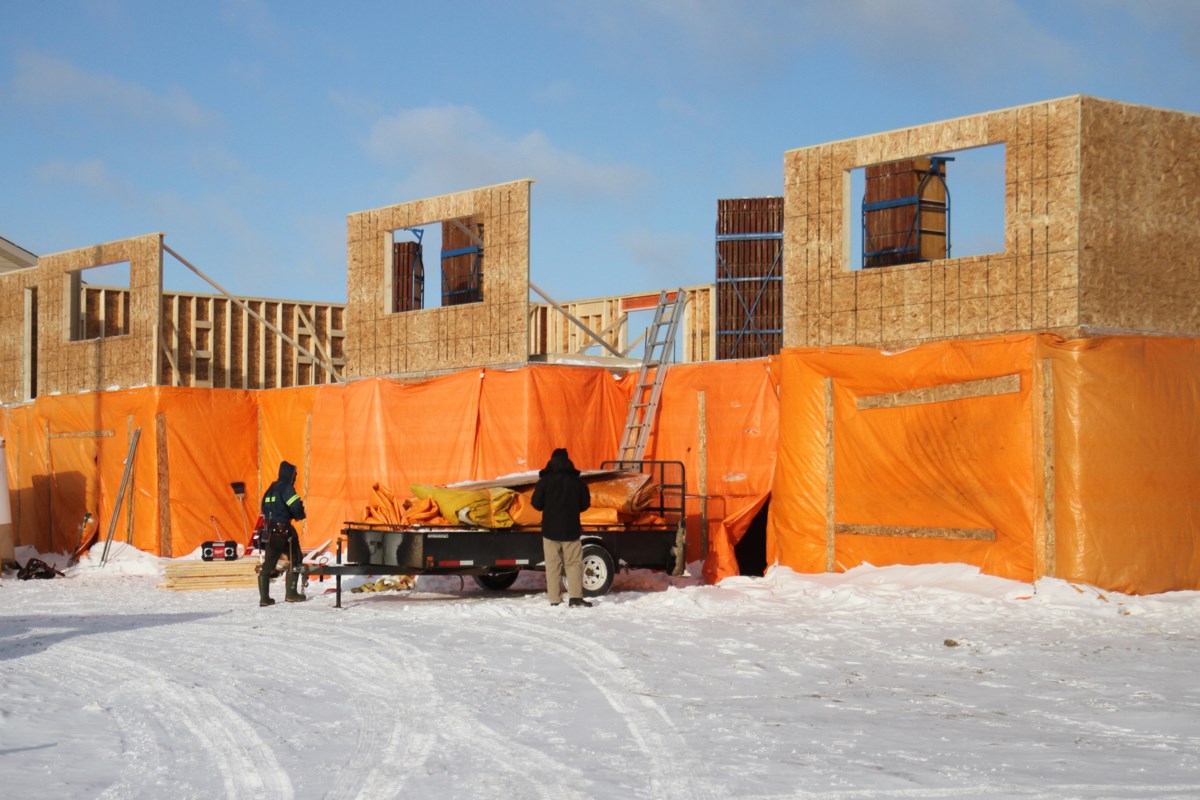Livio Di Matteo feels the funds announced in Ottawa’s fall economic statement won’t address increasing the housing supply.
The federal government is throwing a lot of dollars at housing, but a major portion of the funds won’t kick until two years from now.
That is the takeaway of Lakehead University Economics Professor Livio Di Matteo following this week’s fall economic statement, which includes billions of dollars in new spending and targeted policy measures aimed at increasing the housing supply.
Finance Minister Chrystia Freeland noted that the more sizable financial commitments are not set to roll out the door until 2025.
“In the immediate term, I don’t really see [the loans] having that much of an impact. You can lead a horse to water but you can’t make them drink. The companies, builders, developers would have to take [the government] up on [the promises],” Di Matteo said. “[This also of course] depends on what interest rates are like, what the state of the economy is and whether people have the purchasing power to pay for the housing.”
Ottawa will offer up to $15 billion in new loan funding in the rebranded Apartment Construction Loan Program beginning in 2025-2026.
Also starting in 2025-2026 an additional $1 billion over three years is being committed to support non-profit, co-op, and public housing builds.
“[Our government is] trying to do a lot more in order to address the housing gap,” said Thunder Bay–Rainy River MP Marcus Powlowski during a recent event in Thunder Bay.
“Traditionally, it’s been the province that has been responsible for building [houses], but there have been periods throughout Canada’s growth, for example after the Second World War, where [Ottawa] put a lot of money into housing and all those post war housing is still around [in] Thunder Bay. This is a time in our history, with our immigration and our growing economy, we have to put again more money and more resources into housing.”
Tuesday’s statement also outlined $20.8 billion in additional spending over the next six years, beyond what was announced in the 2023 federal budget.
The deficit is projected to be $40 billion in 2023-24.
Kenora MP Eric Melillo felt the financial framework ignored the Conservative’s calls to balance the budget, bring down inflation and interest rates.
“We need more homes in our region. The measures announced will not build more homes,” Melillo said.
“If the NDP-Liberal government was serious about fixing the housing crisis, they would support [Conservative leader] Pierre Poilievre’s Building Homes Not Bureaucracy Act. His bill will incentivize municipalities to build more homes by tying their infrastructure funding to their ability to meet housing targets and offer a GST rebate on new residential rental property if the average rent payable is below market rate.”
Di Matteo felt the statement left out the ongoing problem of homelessness.
“You [see] encampments pretty much in cities across the country, and that is a problem but there’s nothing really there that I can see addressing that in a direct way. What you’re looking at is some type of resource expenditure on transitional emergency housing. Fifty years ago, these were called rooming and boarding houses. Those don’t exist anymore [and have been replaced by] new builds.”
Di Matteo added that handing over money and building apartments in the region that will charge $2,500 a month doesn’t actually solve the affordable housing crisis.
One idea that Di Matteo pointed to that might work in Ontario is an idea that the British Columbia provincial government unveiled last week.
“It’s a standardized housing design — basically save money on design, permits approvals and everything. It’s similar to [an initiative during the 1940’s] in which the federal government basically came up with these plans,” he said.
“There are houses here, for example on Frederica Street (in Thunder Bay), that were obviously wartime homes and can’t be more than 900 square feet. It would nice to see the federal government working with the provinces to sort of spread that across the country because that might be more useful.”
Through the new Standardized Housing Design Project, British Columbia is creating standardized, customizable residential designs for small-scale, multi-unit housing built on single lots.
The designs can be adopted by local governments and offered to builders and homeowners at a significantly below-market cost to expedite permitting and development.
Di Matteo stressed that Ontario could do the same if there are more federal incentives.
The House of Commons will debate and later vote on measures announced in the fall economic statement in the coming weeks.
This article was published by: Kevin Jeffrey, Local Journalism Initiative Reporter
Visit the original article here



